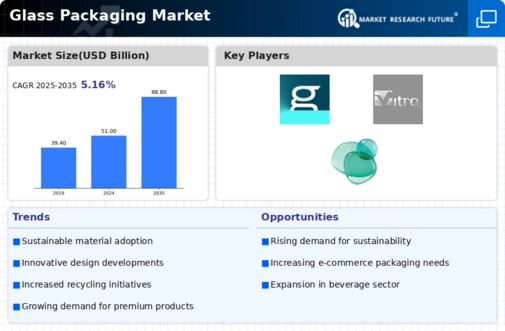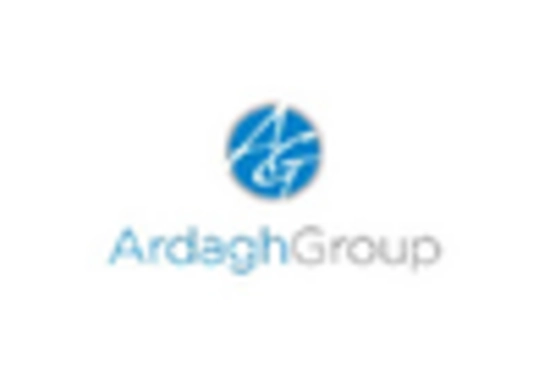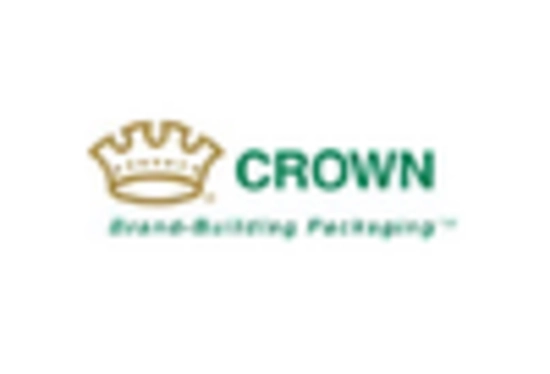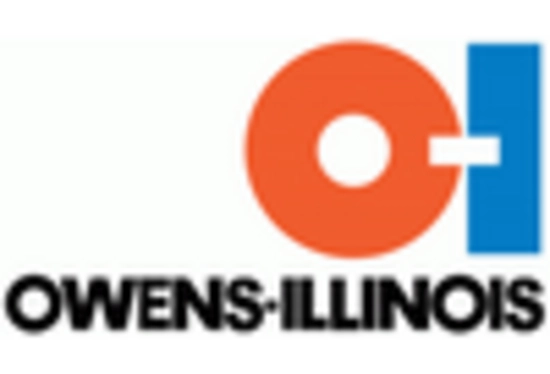Market Analysis
Glass Packaging market (Global, 2024)
Introduction
Glass bottles are undergoing great changes, owing to the changes in consumers’ habits, in the demand for the environment and the technological progress. In the sphere of the environment, the glass bottle is becoming more and more popular because of its recyclability and the quality of the products. The glass bottle market is very varied, because of the many different applications: food and beverages, pharmaceuticals, cosmetics, etc. Each of these applications requires a special glass bottle, combining the right appearance with the right functionality. In the field of design and manufacturing, glass is proving to be very versatile, and is a good choice for brands which want to be different from the competition. In addition, the development of e-commerce and the changes in retailing are having an effect on the glass bottle industry, which is obliged to change and to innovate to meet the requirements of the companies and the consumers. And the players in the industry have to be able to cope with the fluctuations in costs and the disruptions to the supply chains, and at the same time to take advantage of the growing interest in the environment.
PESTLE Analysis
- Political
- In 2024, the glass packaging market is influenced by a number of political factors, such as government regulations aimed at reducing the amount of plastic waste. For example, the European Union has set a goal of reusing and reusing at least 90 per cent of glass packaging by 2030, as part of its circular economy plan. This regulatory framework is expected to stimulate demand for glass packaging as companies strive to comply with these stringent targets. Also, some countries have introduced a tax on disposable plastics, with some regions charging up to 10 cents per item. This also has an incentive effect on the glass packaging market.
- Economic
- The economic environment of the glass-packaging market in 2024 is characterized by rising raw-material prices and inflationary pressures. The price of silica sand, the principal raw material for glass production, has risen by about 15 percent over the past year to $60 per ton. This rise in production costs has led to the search for more efficient production methods and alternative materials. In addition, the world’s post-pandemic economic recovery has led to a recovery in consumer spending, with a projected retail turnover of $5.13 billion in 2024. This turnover is expected to lead to an increase in demand for glass containers.
- Social
- In 2024 social trends showed a growing preference for packaging that was sustainable. A survey taken in the first months of the year showed that 78% of consumers were willing to pay a higher price for products packed in earth-friendly materials, such as glass. This was a change in the buying habits of consumers. Brands rushed to adopt glass packaging to enhance their marketability and show their commitment to the environment. In addition, the growing health consciousness among consumers meant that the beverage industry also demanded glass packaging for juices and health drinks, which were considered more natural in glass.
- Technological
- Towards 2024, technological advancements will play a crucial role in the glass packaging market. The automation of production lines has led to a reduction in energy consumption of up to 20%. The development of lightweight glass packaging is also gaining traction, with new formulations reducing the weight of the glass by approximately 10% without compromising on its strength. These technological improvements not only improve the production efficiency but also reduce the transportation costs and the carbon footprint.
- Legal
- The glass package market in 2024 will be influenced by regulations on the safety of products and the environment. The Food and Drug Administration (FDA) has established new regulations for food contact materials, requiring that all glass packaging used for food must meet certain safety standards. These standards are obligatory, and non-compliance with them can result in a fine of up to $250,000 per infringement. In addition, stricter labeling regulations are being introduced in various countries, which will have a significant impact on the glass package market.
- Environmental
- In 2024, the glass packaging market will be dominated by a growing concern for the environment, with a strong emphasis on sustainability. The glass recovery rate in Europe is already 76% and initiatives are being taken to raise it to 90% by 2030. This high recovery rate reflects the industry’s commitment to reducing waste and promoting the principles of the circular economy. The carbon footprint of glass production is also being addressed. Glassworks are investing in the production of green energy, which in 2024 will account for approximately 30% of the energy used in glassmaking, thereby reducing greenhouse gas emissions.
Porter's Five Forces
- Threat of New Entrants
- The glass packaging industry has a moderate degree of protection against competition because of the high cost of building factories and acquiring machinery. In addition, the distribution network and brand loyalty of established brands make it difficult for newcomers to enter the market. However, the growing demand for sustainable packaging solutions may attract new players to the industry.
- Bargaining Power of Suppliers
- The relative strength of the suppliers in the glass container industry is low, as there are numerous suppliers of raw materials such as sand, limestone and soda ash. This abundance of suppliers allows the glassworks to change suppliers at will, which reduces the power of the suppliers. Suppliers of specialised materials or technical know-how can be more powerful.
- Bargaining Power of Buyers
- The buyers in the glass container market, especially the large retailers and beverage companies, have considerable negotiating power, due to their size and the quantity of their purchases. They can bargain over prices and demand higher quality and bespoke products, which puts pressure on manufacturers to meet these demands and to maintain their profits.
- Threat of Substitutes
- The threat of substitutes for glass containers is moderate, as plastic and metal containers are widely available and often cheaper. However, the growing demand for sustainable and recyclable packaging gives glass an advantage, although price-sensitive consumers could still opt for substitutes.
- Competitive Rivalry
- The market for glass containers is highly competitive, with several established players competing for market share. The companies are constantly trying to improve and diversify their products to stand out from the crowd. In addition, the market is characterised by price competition, which further intensifies the rivalry between the established companies.
SWOT Analysis
Strengths
- Sustainability and recyclability of glass packaging appeal to environmentally conscious consumers.
- Glass packaging offers superior protection for products, maintaining quality and freshness.
- Strong brand perception and premium image associated with glass packaging enhance product value.
Weaknesses
- Higher production and transportation costs compared to alternative packaging materials.
- Fragility of glass can lead to increased breakage during handling and shipping.
- Limited flexibility in design compared to plastic packaging options.
Opportunities
- Growing demand for sustainable packaging solutions presents new market opportunities.
- Expansion into emerging markets where glass packaging is gaining popularity.
- Innovation in glass manufacturing processes to reduce costs and improve efficiency.
Threats
- Intense competition from alternative packaging materials, particularly plastics and metals.
- Economic fluctuations affecting consumer spending on premium packaging.
- Regulatory changes regarding packaging materials and recycling requirements.
Summary
In 2024, the glass packaging market will be characterized by its strengths in terms of sustainability and product protection, which will resonate with consumers. But the higher cost and fragility will remain weaknesses. Opportunities to grow will be driven by the increasing demand for eco-friendly solutions and market expansion. Threats to growth will come from the competition from alternative materials and from economic factors. In order to exploit the strengths and mitigate the risks, strategic focus on innovation and cost reduction will be necessary.

















Leave a Comment